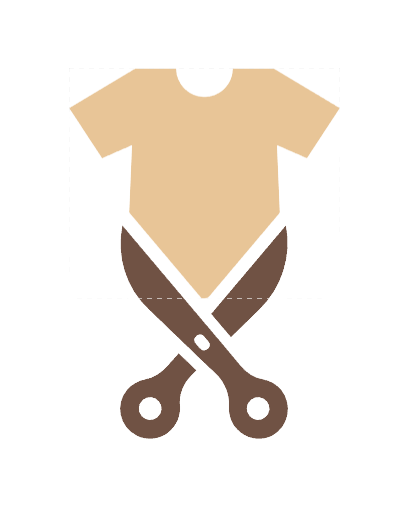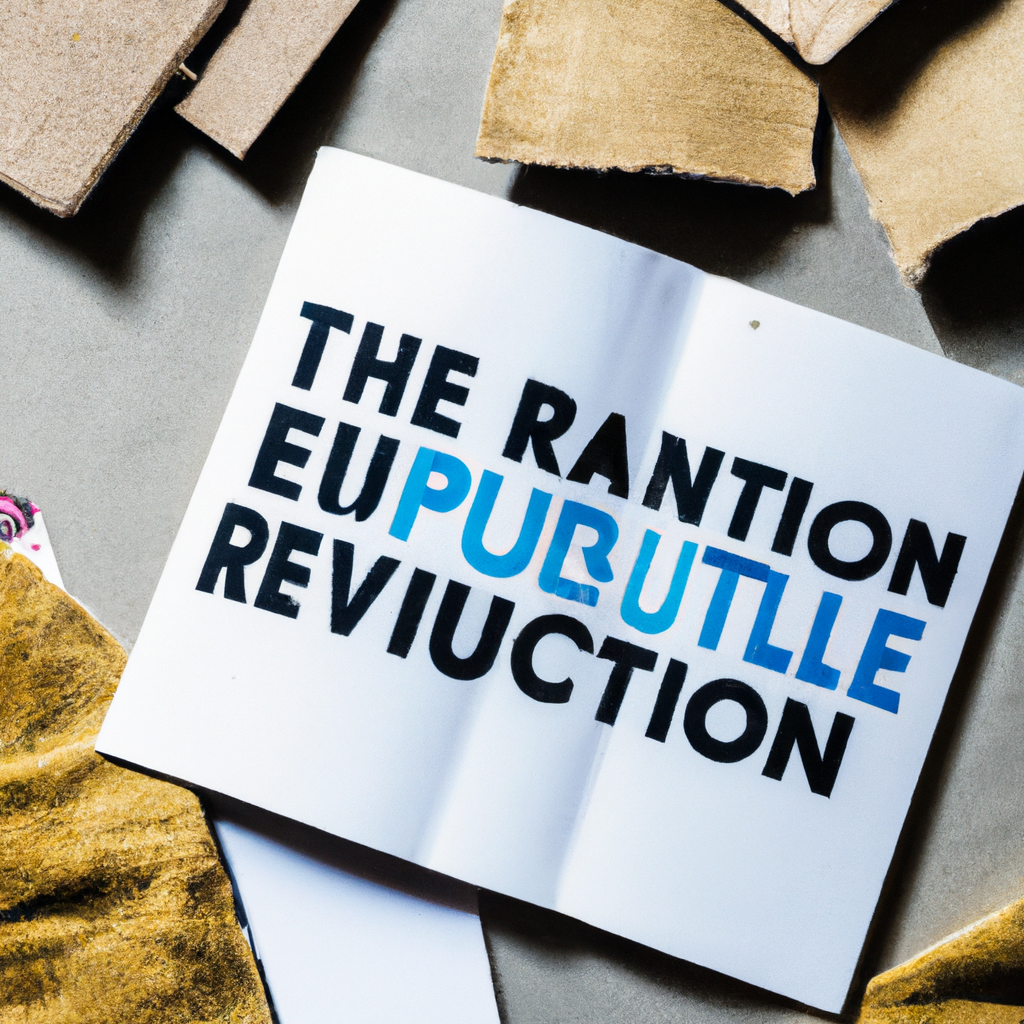In a world where demand for clothing is consistently on the rise, fast fashion poses a threat to the environment and to ethical production standards. But amidst this alarming situation, an inspiring movement is gaining traction that promises to revolutionize the way garments have been produced so far. The Fashion Revolution is determined to create a global industry that can meet the needs of today’s consumers, while protecting the planet and the people involved in the production process. It’s a mission that has come at just the right time.
1. ‘The Unstoppable Rise of the Fashion Revolution
The fashion revolution has been unstoppable since its inception. With its ever-changing trends and innovative forms, it has been able to transcend the traditional idea of clothing. Today, it has become one of the most dynamic and inspiring movements, transforming communities, challenging cultural boundaries and changing the way people view fashion and consume it.
From the rejection of unpleasant and unsustainable textile production methods, to empowering its consumers with the philosophy of ethical and fair fashion, the fashion revolution has gained momentum and rendered extraordinary advocates around the world. Its components include creative designs and articulated ideas that are sustainable, affordable, and available to everyone. Moreover, its unique ensembles continue to inspire changes that draw attention to the possibility of transforming the fashion industry.
- Preserving culture and tradition: The fashion revolution has brought forth a greater appreciation for cultural legacies by promoting the use of natural fibers and traditional tailoring.
- Advocacy: With the goal of sustainability and social welfare, advocacies on the importance of ethical fashion have been widely successful.
- Innovative processes and designs: The fashion revolution has driven progress in textile production resulting in more vibrant and exquisite designs.
2. Challenging the Status Quo Through Ethical Fashion
Have you ever stopped to think about the implications of your fashion choices? High street shops often produce products in a wasteful manner with little regard for the ethical welfare of both people and planet. If your style mantra is all about challenging the status quo, then ethical fashion may be the path to take.
Integrating sustainability and ethical sourcing into your wardrobe is an achievable goal, all without compromising on your personal style. Here are a few ways to turn your wardrobe green and ethical:
- Seek out ethical clothing retailers – look for shops that are committed to promoting sustainable fashion, and that use ethical production methods such as recycling materials, as well as paying workers a living wage.
- Shop vintage and second-hand –buying second hand or swapping clothes with friends is a great way to enjoy an on-trend wardrobe and reduce the fashion industry’s environmental impact.
- Research popular materials – become aware of the resources used when producing garments. Are they synthetic, or do they come from renewable sources? Investigate the brand’s policies, including the use of any harmful chemicals.
It has never been easier to adopt sustainable practices within your wardrobe. Challenge the status quo and give ethical fashion a go – who knows, you may just be surprised by how much you love it!
3. Redesigning the Future of Clothing for a Sustainable Tomorrow
Fashion trends are constantly changing, but one thing is sure to remain: a need for sustainability. In order to create a future of clothing that is both fashionable and sustainable, the process needs to be redesigned.
One way to begin this process is by utilizing materials that are both eco-friendly and durable. Materials such as bamboo, linen, and organic cotton are great sustainable options, and will provide garments that last longer than conventional fast-fashion pieces. In addition to the materials used, the production process also needs to be more sustainable. The waste generated by the fashion industry is staggering, and immediate solutions need to be implemented.
- Utilizing recycled materials whenever possible
- Reducing water consumption during production
- Encouraging ownership of fewer items of higher quality
- Emphasizing repair and repurpose of items over disposal
These are a few ways to move towards a future in clothing that is better for the planet and for those creating the garments. By redesigning the process of production, sustainable fashion can become more accessible and affordable.
4. How the Campaign is Creating Positive Change
The campaign has had a huge impact on the local community, both in terms of tangible benefits and a sense of connection and pride. Here are a few of the positive impacts that the campaign has had on people’s lives:
- Financial support has been provided to families who have been affected by the pandemic.
- Provided assistance to job seekers, providing them with better opportunities.
- Donations to local charities and organizations, giving vital support to those in need.
The campaign has also brought people together and inspired a renewed sense of purpose and pride. Through its online presence and social media campaigns, people have come together to discuss important issues and inspire each other to make positive change. It’s created a space to learn more about the challenges facing the local community and to brainstorm ways to make a difference.
5. The Power of the Consumer and the Impact of Fashion Revolution
Revolutions do not always cause disruption. For millions of fashion-conscious shoppers around the globe, the annual Fashion Revolution event is a time to come together to celebrate the power of the consumer. We are the ones with the ability to shape the industry and demand ethical production standards from the brands we love.
Fashion Revolution is a global movement that sees the buying power of consumers and the responsibility of the industry to operate ethically. Every year, this grassroots event challenges the traditional fashion system and encourages ethical production. Consumers can show their commitment to the cause by getting informed about the cogs in the production chain and how our actions can make a difference. With the support of fashion-focused organizations, including labels, publications, retailers and designers, we can educate ourselves about the consequences of our choices and actively seek out responsible brands.
Fashion Revolution’s larger goal is to create systemic change within the fashion industry and ending labor exploitation. From boycotting fast fashion to collaboratively demanding transparency, we have the power to create a fashion ecosystem that is sustainable and responsible. During this event, the industry and consumers alike agree to work toward these same values, making way for a fairer, safer, and more sustainable fashion future for all.
6. Embracing the Future with Ethical Style
Now more than ever, fashion is undergoing a much-needed movement towards sustainability and ethical production. As the fashion industry is one of the largest polluters in the world, it is essential for us to find new and innovative ways to reduce the negative impacts caused by the industry. To do this, fashion lovers can embrace the future of fashion by opting for more sustainable and ethical styles.
The future of fashion lies in ethical and sustainable materials. New materials such as organic cotton, Tencel, and Peace Silk can be used to create stylish garments without the environmental impact associated with traditional fabrics, such as viscose and polyester. These materials are renewable, biodegradable, and often involve fewer toxic chemicals in production as well. Additionally, ethical fashion focuses on promoting fabrics made from recycled ocean waste or plastic, as well as designs produced in slow fashion.
- Organic cotton: Grown without the use of synthetic agricultural chemicals or toxic dyes
- Tencel: Made from wood pulp from sustainably managed forests
- Peace Silk: Produced with minimal environmental impact using non-violent methods
- Recycled ocean waste: Fabric made from discarded nylon waste extracted from oceans and landfills
- Slow fashion: An ethos meant to reduce environmental impact and minimize waste by producing fewer, better quality garments at a slower pace
By choosing ethical and sustainable materials, fashion lovers can support an industry that is taking conscious steps to reduce its environmental footprint. From sourcing through production, the future of fashion has never been brighter.
The Fashion Revolution continues to expand around the world, with more and more people demanding more ethically-responsible fashion. With each passing year, the movement grows ever larger and stronger, and shows no sign of slowing down anytime soon. It is at the forefront of making a more just and sustainable world, and it is clear that the Revolution is here to stay.





